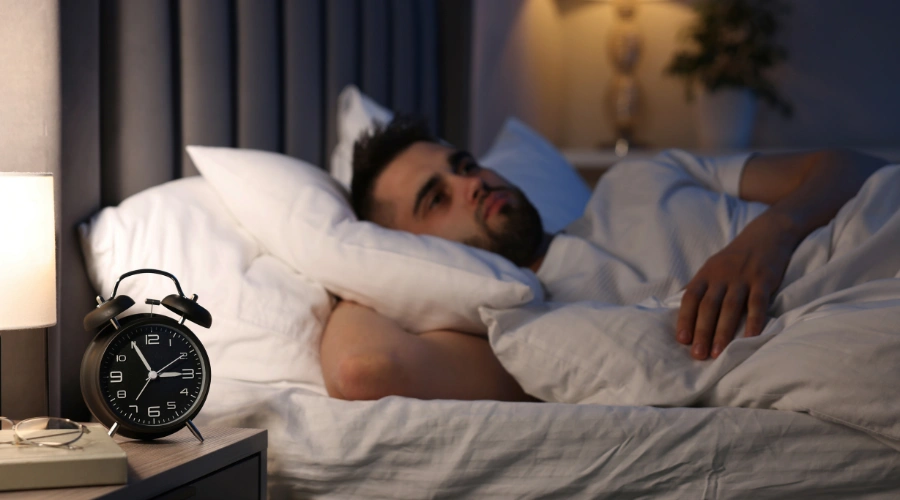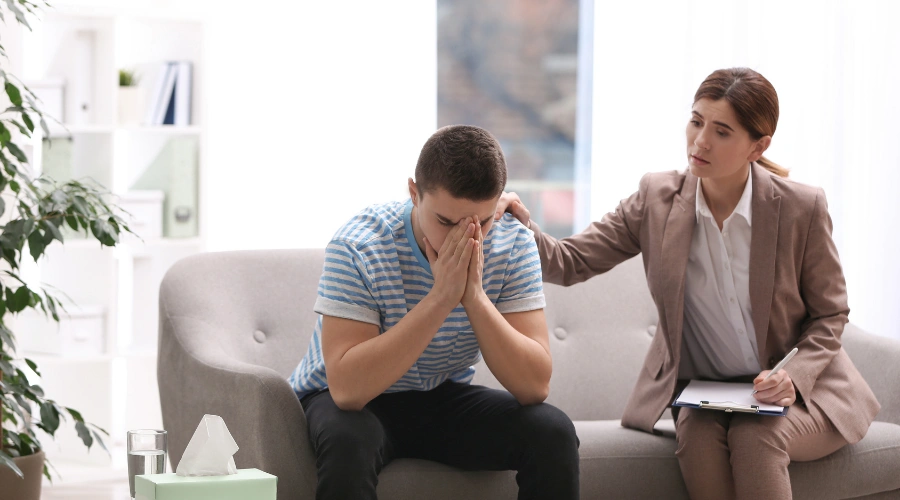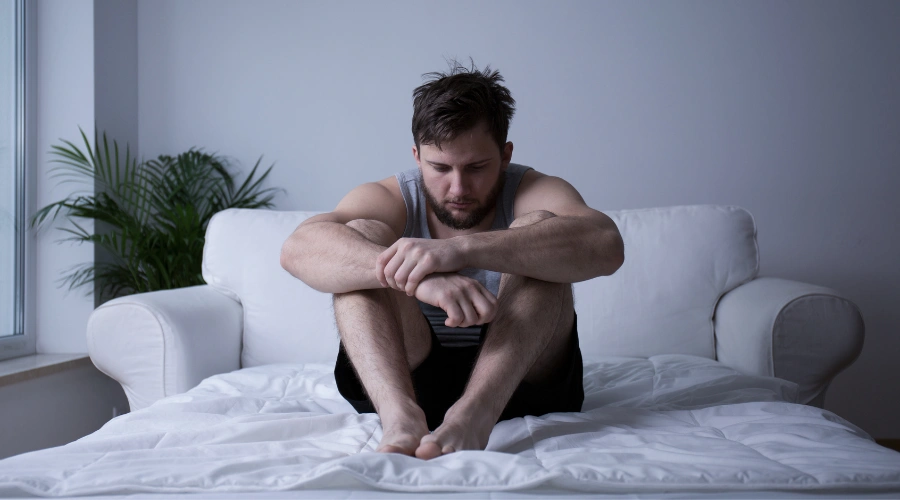Guidance on the Timeline for Insomnia from Kratom Withdrawal
Quitting anything is never the “easy” part. Especially with drugs like kratom that many people think of as ‘natural.’
You might feel encouraged the first couple hours, or like you don’t even need kratom. If you’ve been using it heavily or for a long time, though, it won’t be long until withdrawal symptoms set in.
You might try to “sleep it off”, but after lying down, sleep feels impossible. Your brain just won’t stop, and it’s impossible to feel comfortable.
This can leave you wondering if a sleep aid or other substances can help, but that can potentially keep you trapped in the cycle of addiction.
So, let’s get you answers: How long does kratom withdrawal insomnia last for?
Your sleep disruptions are most likely to last for a week or two, though prolonged withdrawal makes them more challenging for some people.
Our guide from South Shores Recovery will give you a clearer picture of the kratom withdrawal timeline and some options for support, should you decide that you don’t want to take on kratom withdrawal alone.
What Are the Most Common Kratom Withdrawal Symptoms?

Kratom use interacts with the opioid receptors in your brain, so withdrawal mimics what you’d experience from opioid withdrawal. It can be extremely unpleasant, but the symptoms aren’t quite as severe in the physical sense.
Psychological withdrawals from kratom are a different matter though, with many clients describing insomnia and severe depression, particularly when using 7 Oh kratom products. But all these difficulties can a little easier to manage when you know what to expect during the withdrawal process.
Becoming dependent on any addictive substances leads to withdrawal when you quit. Symptoms can start within hours after your last dose, and continue to peak for the first 3-5 days.
Even though these symptoms are typically are milder than opioid withdrawal, they can still be severe enough to interfere with daily function. Insomnia, anxiety, cravings, and fatigue also linger. When you can’t sleep, it’s hard to recover properly and overcome the challenges that recovery may throw at you.
What are the Most Common Physical Symptoms of Kratom Withdrawal?
Factors like how long and how heavily you’ve been using kratom are going to affect the intensity of the adverse effects you notice. Many people compare withdrawal symptoms to a nasty flu.
Achy muscles and restless legs make relaxation impossible. Your body struggles to regulate things like temperature, leading to excessive sweating and hot or cold flashes. Nausea, diarrhea, and even a runny nose can irritate you further. Muscle aches and joint pain are often worse in people using kratom for pain relief.
Are There Psychological Symptoms of Kratom Withdrawal Beside Insomnia?
Your chemistry is also impacted by long-term kratom use. When you quit, you might feel anxious, irritable, or down in the dumps. Sleep feels impossible, making it harder to manage focus issues and intense cravings.
Fragmented sleep patterns, problems falling asleep, and vivid dreams are made worse by racing thoughts and heightened anxiety. For many people, this is the worst part of withdrawal.
As we touched on above, trying to put aside a kratom dependence can also cause psychiatric complications, particularly if you were dealing with depression or anxiety beforehand and slef-medicating with kratom in some form.
The Kratom Withdrawal Timeline: How Long Does Kratom Withdrawal Last?

Things like how often you use kratom, your average dosage, and your body all change exactly how the kratom withdrawal timeline is going to affect you.
Still, expect withdrawal to start within 12-24 hours of your first dose, sooner if you take kratom frequently throughout the day.
The good news is that by days 2-5, physical symptoms peak.
Then, they start to fade. Kratom withdrawal symptoms like sweats, abdominal pain, muscle aches, and mood swings won’t be as severe by days 5-7. Still, cravings, anxiety, and disrupted sleep can last much longer. It’s normal for 1-2 weeks, but kratom insomnia may linger. This is more likely if you’ve used kratom heavily or for a long time.
The Role That Your Last Dose Plays in the Timeline
The timing of withdrawal symptoms usually depends on when you last took kratom. Higher doses take longer for your body to process, so it might delay symptoms slightly.
This higher dose can also make withdrawal symptoms worse, though. If you take kratom multiple times each day, then you also may feel the effects sooner than someone who only uses it occasionally.
Your last dose also influences how quickly sleep problems appear. If you take kratom at night because of its sedative effects, these problems can be worse. This happens because your brain has become reliant on kratom to fall asleep.
Our Medical Detox for Kratom Addresses Lingering Sleep Problems Holistically
Even after medically detoxing from kratom, sleep issues can linger. Your body and brain need time to reset the natural sleep rhythms that kratom disrupted. For some, these problems continue for several weeks or even appear intermittently during recovery.
Often, lingering insomnia is linked to post-acute withdrawal syndrome (PAWS). During PAWS, psychological symptoms like anxiety, depression, cravings, and insomnia tend to stick around for extended periods following detox.
Professional treatment programs like the ones we offer through South Shores Recovery may use holistic therapies, relaxation techniques, and non-addictive sleep support to help restore natural rest.
What Are My Options for Kratom Addiction Treatment?

Kratom might not be the first drug that comes to mind when you hear words like “substance abuse treatment” or “rehab” and there’s a good reason why the FDA is now starting to crack down on kratom. You have to go through the kratom withdrawal process alone. At South Shores, we offer a combination of medical support, counseling, and holistic care to address your withdrawal.
This may start with medical detox, as needed, to ease withdrawal symptoms and manage insomnia. From there, you have options like residential rehab for structured care and relapse prevention, outpatient programs for flexible support, or dual diagnosis for co-occurring mental health conditions.
By combining evidence-based care with holistic therapies, our treatment programs have helped many people rebuild healthy routines, improve sleep, and reduce relapse risk. We can help you, too.
Do I Need Help to Safely Detox from Kratom?
You might think that kratom, something you can easily get at your local gas station or online retailers, is something you can quit alone. Some people are successful.
But opioid withdrawal symptoms can also make quitting by yourself difficult. There’s also a greater risk of relapse without the support that you’ll find in a medical detox program.
Does My Insurance Coverage Include Treatment for Kratom Withdrawal?

Substance use disorder is considered an essential benefit, and that extends to kratom. Insurance coverage usually will pay for treatment for kratom withdrawal, as well as any related mental health needs. Detox, inpatient, and outpatient treatment options are usually covered, particularly if they’re deemed medically necessary.
At South Shores, we make it easy to find out whether you’re covered. Call us, and our admissions team can verify your insurance benefits, explain costs, and handle any pre-authorizations that might be needed. We handle the paperwork, and you focus on healing.
Find Support Overcoming Kratom Withdrawal and Sleep Issues at South Shores
Losing sleep to kratom withdrawal is exhausting, literally. Fortunately, you can find the support that you need to overcome these sleep issues at South Shores Recover in Dana Point, CA.
Our detox program goes beyond medical supervision and medication. We teach you relaxation techniques and provide non-addictive support for better sleep.
You’ll find that when you can sleep, your body and mind get the rest that they need to heal from kratom addiction. Call us confidentially now to learn more about how we can help.


Recent Comments